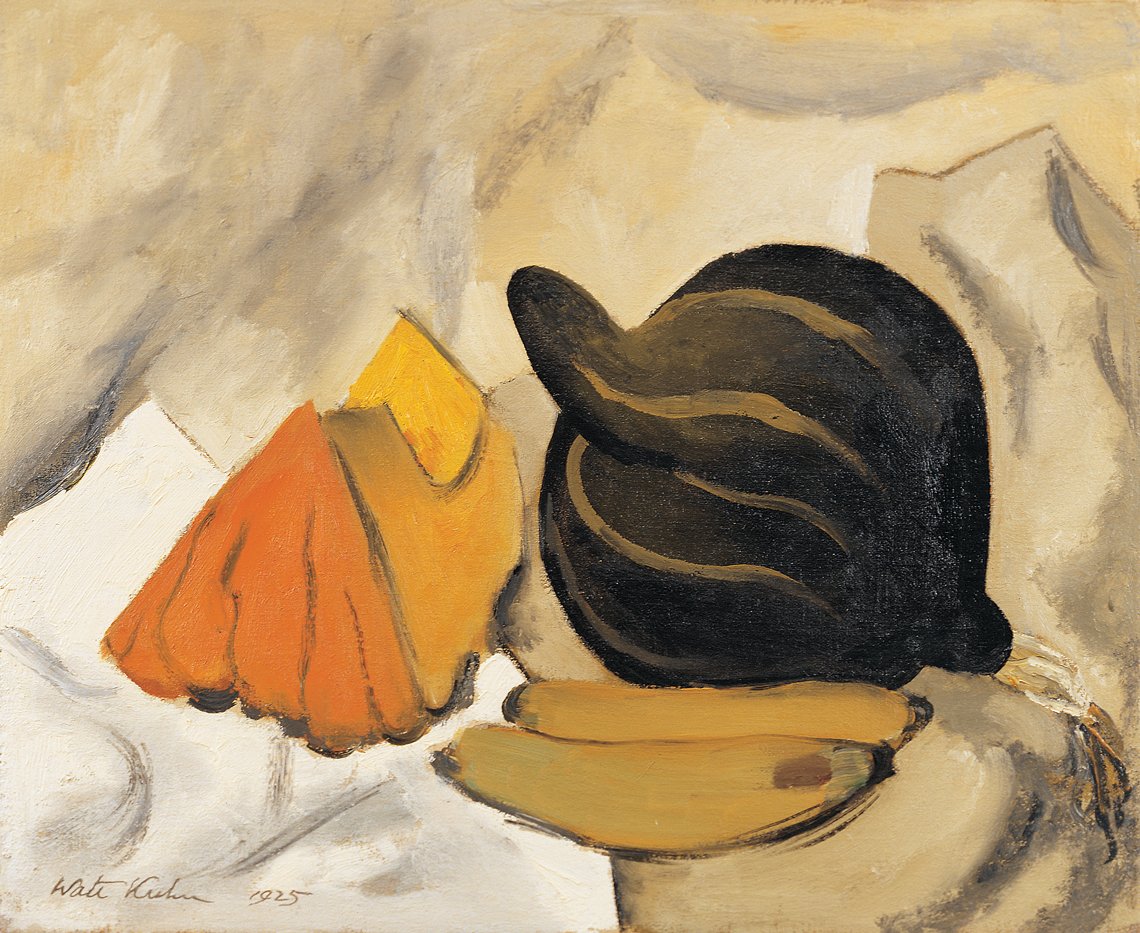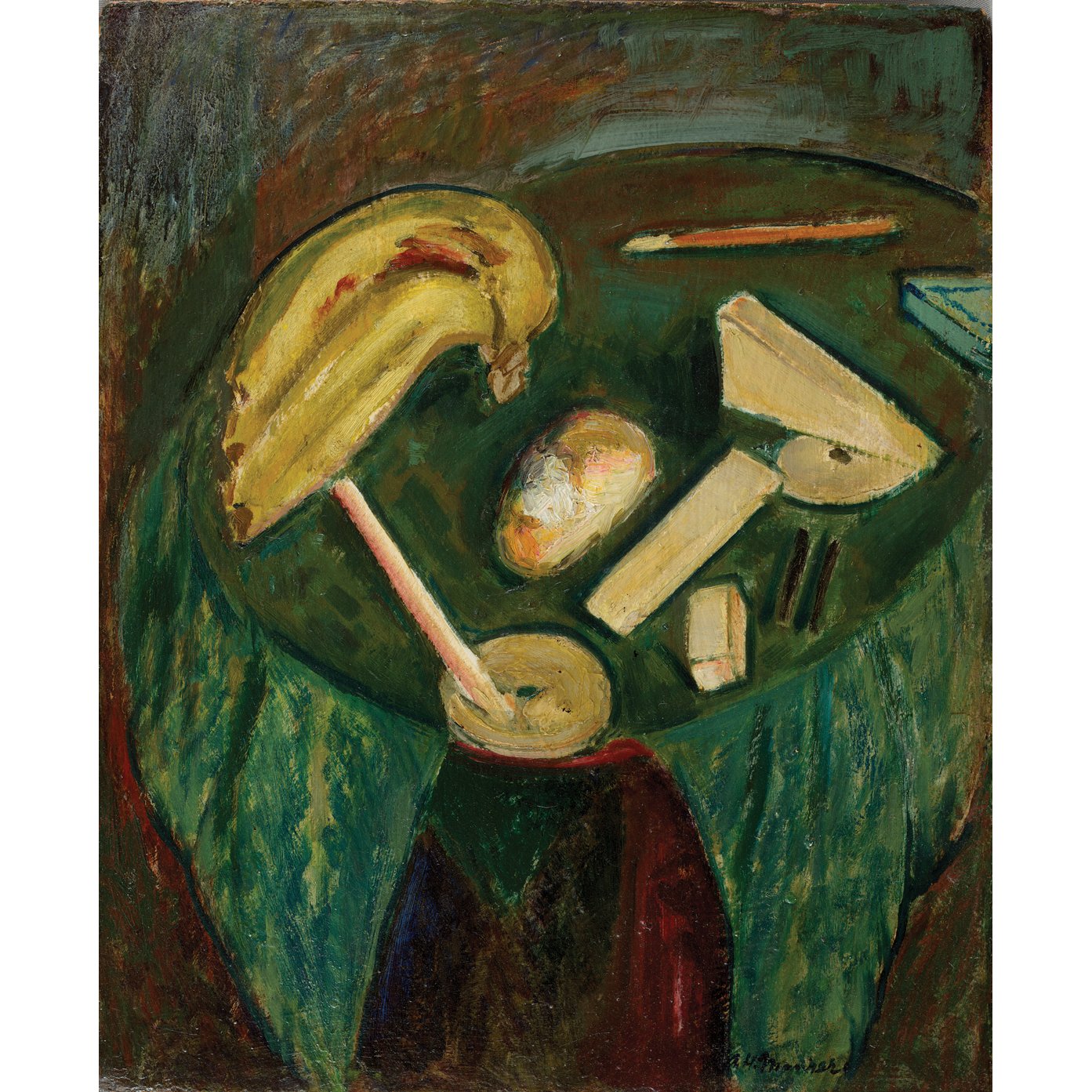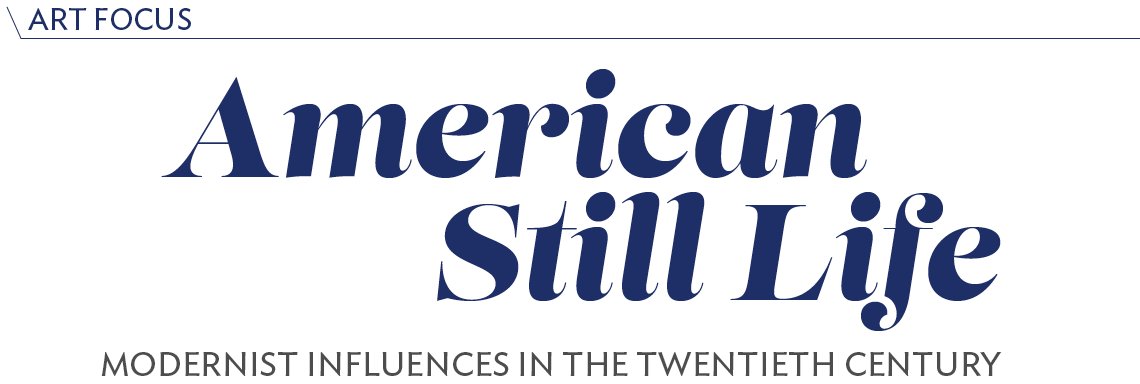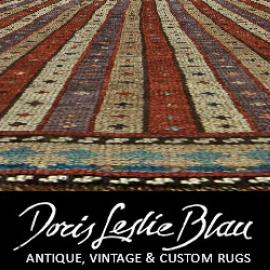Although a number of American still life artists who gained prominence during the nineteenth century were still active and influential after 1900, the still life genre in America in the early part of the twentieth century was profoundly impacted by modernist developments. Generally European in origin, American painters experienced these influences either through travel abroad or through exposure to those who had directly encountered the modernist current in France or Germany. No one modern movement influenced still life painting the most; instead, various painters brought stylistic changes to the genre based on their prevailing interests.1
 |
Fig. 1: Walt Kuhn (1877-1949), Still Life of Vegetables, 1925. Oil on canvas, 16 x 20 inches. Signed and dated lower left: "Walt Kuhn 1925." Courtesy Brock & Co., Carlisle, MA.
|
Best known for his portraits of circus and vaudeville performers, Walt Kuhn (1877–1949) executed a significant number of still life paintings. Born in Brooklyn, New York, his mother encouraged his early interest in art and theater. In the early 1890s he sold his first drawings to a magazine. Following evening art classes at the Brooklyn Polytechnic Institute he moved to San Francisco in 1899, where he worked as a cartoonist. In 1901 he traveled to Paris and entered the Académie Collarossi, but soon departed for Munich where he attended the Royal Academy. In 1905 he exhibited at the Salmagundi Club in New York and in 1909 at the Madison Gallery. He played a critical role in the organization of the 1913 Armory Show, traveling to Europe to select works for display. During the 1920s he taught at the Art Students League in New York. Throughout his career Kuhn sustained an interest in still life painting and confidently applied his Cézanne-inspired tendencies to this genre. Kuhn's Still Life of Vegetables, 1925 (Fig. 1), illustrates the relationship between color and structure seen in the best of his still life work.
 |
 |
Fig. 2: Patrick Henry Bruce (1881-1936), Still Life with Plate of Fruit, ca. 1911-12. Oil on canvas, 10-5/8 x 13-3/4 inches. Signed lower left: "Bruce." Courtesy Gerald Peters Gallery, New York.
|
Because he spent most of his life abroad, the distinctive form of geometric abstraction developed by Patrick Henry Bruce (1881–1936) went largely unnoticed in the United States during his career. Born in Long Island, Virginia, he attended classes at the School of the Art Club of Richmond, Virginia, and at the Virginia Mechanics Institute before he traveled to New York City in 1901 to study with William Merritt Chase (1849–1916) and Robert Henri (1865–1929) at the New York School of Art. He arrived in Paris in 1904, and although the influence of French Impressionism caused him to brighten his pallete, it was not until around 1908, following his introduction to Matisse, with whom he studied, that he began to embrace abstraction. Bruce was also impacted by the geometric quality of Cézanne's work, and a synthesis of these influences is present in Still Life with Plate of Fruit (Fig. 2) and the other still life subjects he painted between 1910 and 1912. From around 1914 to 1918 Bruce painted radically colored abstractions inspired by his interest in Orphism, the result in part of his friendship with the principal of the movement, Robert Delaunay (1885–1941). His most characteristic paintings are large format still life subjects dating from the 1920s, in which readily identifiable objects are rendered with flat forms, angled edges, and unmodulated color. Although he exhibited at the 1913 Armory Show in New York and regularly at the Paris Salon d'Automne, Bruce led a reclusive life, explaining little about his art, much of which he destroyed. He remained in France until 1936. Soon after his return to New York, he committed suicide.
 |
 |
Fig. 3: Thomas Hart Benton (1889–1975), Still-Life, Flower, 1923. Oil on paper mounted on board, 8-3/8 x 4-1/2 inches. Courtesy Brock & Co., Carlisle, MA.
|
Considered one of the most important American regionalists, Thomas Hart Benton (1889–1975) was an outspoken opponent of modernism, although early in his career this was not the case. Born in Neosho, Missouri, as a high school student he attended classes at the Corcoran Gallery of Art in Washington, D.C., and later at the Art Institute of Chicago. Between 1908 and 1911 he studied in Paris at the Académie Julian with Jean-Paul Laurens (1838–1921) and at the Académie Collarossi, and absorbed the influences of Cézanne and Matisse. On his return to America, Benton experimented with post-impressionism as well as synchromism—a movement involving the use of heightened color in abstraction co-introduced by Benton’s friend Stanton MacDonald-Wright (1890–1973). Although he moved away from the color dominated aesthetic embraced by the synchromists, for several years during the second half of the 1910s he created abstractions with geometric forms usually based on sculpture. In the early 1920s Benton began to eliminate completely abstract devices from his work and exchanged geometric shapes for the human figures and recognizable objects of his regionalist works. His Still-Life, Flower (Fig. 3), dating from 1923, speaks to Benton’s shift of emphasis at this time.
 |
 |
Fig. 4: Marsden Hartley (1877-1943), Grapes, ca. 1923. Oil on canvas, 10-1/4 x 13-3/8 inches. Inscribed on back of canvas: "This painting by Marsden Hartley / is listed with the American Art / Research Council of the Whitney / Museum. / Carl Sprinchorn / Sept. 1950." Titled on stretcher bar: "GRAPES" Courtesy Brock & Co., Carlisle, MA.
|
 |
| Fig. 5: Marsden Hartley (1877-1943), Roses for Seagulls That Lost Their Way, 1935-36. Oil on canvas, 16 x 12 inches. Courtesy Bernard Goldberg Fine Arts, LLC., New York. |
The peripatetic Marsden Hartley (1877–1943) was born in Lewiston, Maine. Following a move to Cleveland, Ohio, he briefly attended the Cleveland School of Art before moving to New York City, where he studied for a year at the New York School of Art and four years at the National Academy of Design. In 1909 he met Alfred Stieglitz (1864–1946), the photographer and gallery owner, who offered him an exhibition at his progressive 291 Gallery. Through Stieglitz's gallery Hartley became familiar with the work of Cézanne and Matisse, resulting in a fauvist brightening of his palette and exploration of abstraction. By 1911 he was painting in a cubist style. The following year he went to Paris where he continued to investigate cubism and became a regular at Gertrude and Leo Stein's avant-garde salons. Hartley next moved to Berlin, gaining exposure to the German Expressionists. In 1915 he returned to New York City, where his Berlin works, interpreted as carrying a pro-German sentiment, received a cool reception. As a result, he directed his attention to the less controversial still life genre, one he had pursued in the past. His still life work encompasses representational compositions as well as symbolic abstractions that owe more to primitivistic simplification than to European modernism (Figs. 4, 5).
 |
 |
| Fig. 6: Alfred H. Maurer (1868-1932), Still Life, ca. 1919. Oil on gessoed panel, 21-1/2 x 17-3/4 inches. Inscribed lower right: "A H Maurer." Courtesy Spanierman Gallery, LLC, New York. |
Alfred H. Maurer (1868–1932), sometimes referred to as the first American modernist painter, was born in New York City. His father, Louis Maurer (1832–1932), did lithographic work for the firm of Currier & Ives, and early on, Alfred applied his talent to commercial productions. In 1884, Maurer entered the National Academy of Design, and in 1897 he traveled to Paris, making him the earliest of the young Americans associated with modernism to do so. He remained there until 1914, studying briefly at the Académie Julian. More important, however, was his friendship with the Steins and his exposure to fauvism, particularly in the work of Matisse. Between the years of 1905 and 1907, abandoning his tendency toward tonalism, he opted for more high-keyed colors and simplified detail. For the next twenty years his paintings focused on structure rather than color and–especially in his still life work—the use of a darker palette, as seen in his Still Life, circa 1919 (Fig. 6). Following his return to New York City he continued to associate with other American modernist painters who had left Europe after the outbreak of the First World War. During the late 1920s Maurer began producing still life paintings that display a bird's-eye view perspective and flattened forms. In addition to exhibiting at the Armory Show, he showed at the Society of Independent Artists between 1917 and 1932, the year he committed suicide, possibly as a result of his lack of popular acceptance.
 |
 |
Fig. 7: Arthur B. Carles (1882-1952), Composition, 1935-37. Oil on canvas, 43-3/4 x 59-1/4 inches. Courtesy Avery Galleries, PA.
|
Considered a pioneer of modern art in his hometown of Philadelphia, Arthur B. Carles (1882–1952) received his earliest artistic instruction from his father, a commercial designer, before enrolling at the Pennsylvania Academy of the Fine Arts in 1900, where he studied under William Merritt Chase and Thomas P. Anshutz (1851–1912). In 1907 Carles made his first extended trip to Paris, remaining there until 1910. During this time, the impact of Cézanne and Matisse on his work was especially distinct. Matisse's influence on Carles, bolstered by subsequent visits to France, remained strong into the 1930s, when he became interested in cubism. In New York he participated in Alfred Stieglitz's 1910 "Younger American Painters" show, and in 1912 Stieglitz gave him his first one-man exhibition, in which he included a group of still lifes. The following year his work was featured in the Armory Show, after which his production of still life subjects increased. During the 1920s and 1930s his work became increasingly simplified and abstract. From the second half of the 1930s until 1941, when an accident caused him to stop painting, his work foreshadowed the abstract expressionism that became central to American art in the 1950s. Containing traditional tabletop still life elements, Carles' Composition, 1935–1937 (Fig. 7), represents the pinnacle of his mature style. Traces of cubism are visible, as is the artist's ability to construct forms from color in order to achieve an energetic yet balanced composition.
 |
 |
Fig. 8: Preston Dickinson (1891-1930), Still Life (Vase, Kettle, and Fruit), 1918. Oil on canvas, 20-1/8 x 24-1/8 inches. Signed vertically, lower left: "P. Dickinson." Estate stamp on stretcher. Courtesy Gerald Peters Gallery, New York.
|
During the late 1910s a group of painters labeled precisionists began reducing objects to their basic cubist shapes. Most often associated with the representation of industrial architecture, precisionists like Preston Dickinson (1891–1930) also treated still life subjects in this way. Born in New York City, Dickinson studied at the Art Students League with George Bellows (1882–1925) and Ernest Lawson (1873–1939) from 1906 to 1910. In Paris, between 1911 and 1914, he studied the Old Masters and was influenced by the work of Cézanne. Dickinson's earlier works closely follow the principles of analytical cubism. However, following his return to New York in 1914, his paintings became increasingly conservative in style and his still life subjects, featuring sharply rendered forms, derive their energy from strong light and dark tonal patterns. Painted in 1918, Dickinson's Still Life (Vase, Kettle, and Fruit) (Fig. 8) successfully combines rich colors, decorative patterning, and geometric motifs.
 |
 |
Fig. 9: Charles Demuth (1883-1935), Cyclamen, 1917. Watercolor and pencil on paper, 13-3/4 x 9-3/4 inches. Signed and dated lower left: "C. Demuth/1917." Courtesy Hollis Taggart Galleries, New York.
|
Charles Demuth (1883–1935), another precisionist who painted still lifes, was born in Lancaster, Pennsylvania. In 1903 he began study at the Drexel Institute in Philadelphia, followed by the Pennsylvania Academy of Fine Arts, where he trained under Thomas Anshutz (1851–1912) until 1911. In 1912 he began an extended stay in Paris, where he attended the Académie Julian, Académie Collarossi, and Académie Moderne. These academic experiences as well as socializing with the Steins' circle solidified his commitment to the avant-garde. Following his return to America in 1914 he began painting landscapes in a cubist style, and around 1920 began to apply a precisionist approach to architectural and industrial subjects. Demuth's still life works fall into two distinct categories, both influenced by Cézanne; expressive and delicate paintings of flowers created in the 1910s and more solid and strongly colored fruit and flower pieces dating from approximately 1922 to 1933. His Cyclamen, 1917 (Fig. 9), epitomizes the earlier of these modes, in which soft watercolor washes are used to create a gracefully flowing, organic pattern.
 |
 |
Fig. 10: Georgia O'Keeffe (1887-1986), Pink Daisy with Iris, 1927. Oil on canvasboard, 9-3/4 x 5-7/8 inches. Signed and dated verso: "Georgia O'Keeffe/March-1927." Courtesy Spanierman Gallery, LLC, New York.
|
Grouped with the precisionists is Georgia O'Keeffe (1887–1986) who was born in Sun Prairie, Wisconsin. Her formal artistic instruction began in 1906 when she spent a year at the Art Institute of Chicago before enrolling at the Art Students League of New York, studying there with William Merrit Chase and Kenyon Cox (1856–1919) in 1907 and 1908. She worked in Chicago until 1910 as a commercial artist, before reduced eyesight, the aftereffect of measles, resulted in an artistic hiatus and relocation to Charlottesville, Virginia. Enrolling in a class at the University of Virginia, she was inspired by the theories of Arthur Wesley Dow (1857–1922), the champion of the Arts & Crafts aesthetic, with whom she subsequently studied at Columbia University Teachers College in New York.
After Alfred Stieglitz was shown a group of her abstract drawings, he began exhibiting her work, and in 1917 she had her first one-woman show at his gallery. O'Keeffe and Stieglitz married in 1924. Her still life subjects include shells, fruits, vegetables, and bleached animal bones, but it is her precisionist flower paintings that are central to her originality and technical skill. O'Keeffe often chose irises, lilies, and tulips for the interest created by the depth of their forms, as illustrated by her 1927 Pink Daisy with Iris (Fig. 10). Through magnification, a device she often employed in her still life work, her subjects take on abstract characteristics, whose undulating curves, however, are intensely organic.
In the years following the Second World War, advances in American art were dominated by forms of abstraction in which still life themes held little significance, although the rise of pop art in the late 1950s and photorealism in the 1960s and 1970s revitalized the genre.
1. William H. Gerdts, Painters of the Humble Truth: Masterpieces of American Still Life, 1801-1939 (Columbia and London: University of Missouri Press, 1981) was the source for some of the information contained in this article.
Erik Brockett is on the staff of Antiques & Fine Art Magazine. Previously he was involved in the research and sale of artwork and prints through commercial galleries and auction.
This article was originally published in the Summer 2007 issue of Antiques & Fine Art magazine, a fully digitized version of which is available at www.afamag.com. AFA is affiliated with Incollect.com.
















































